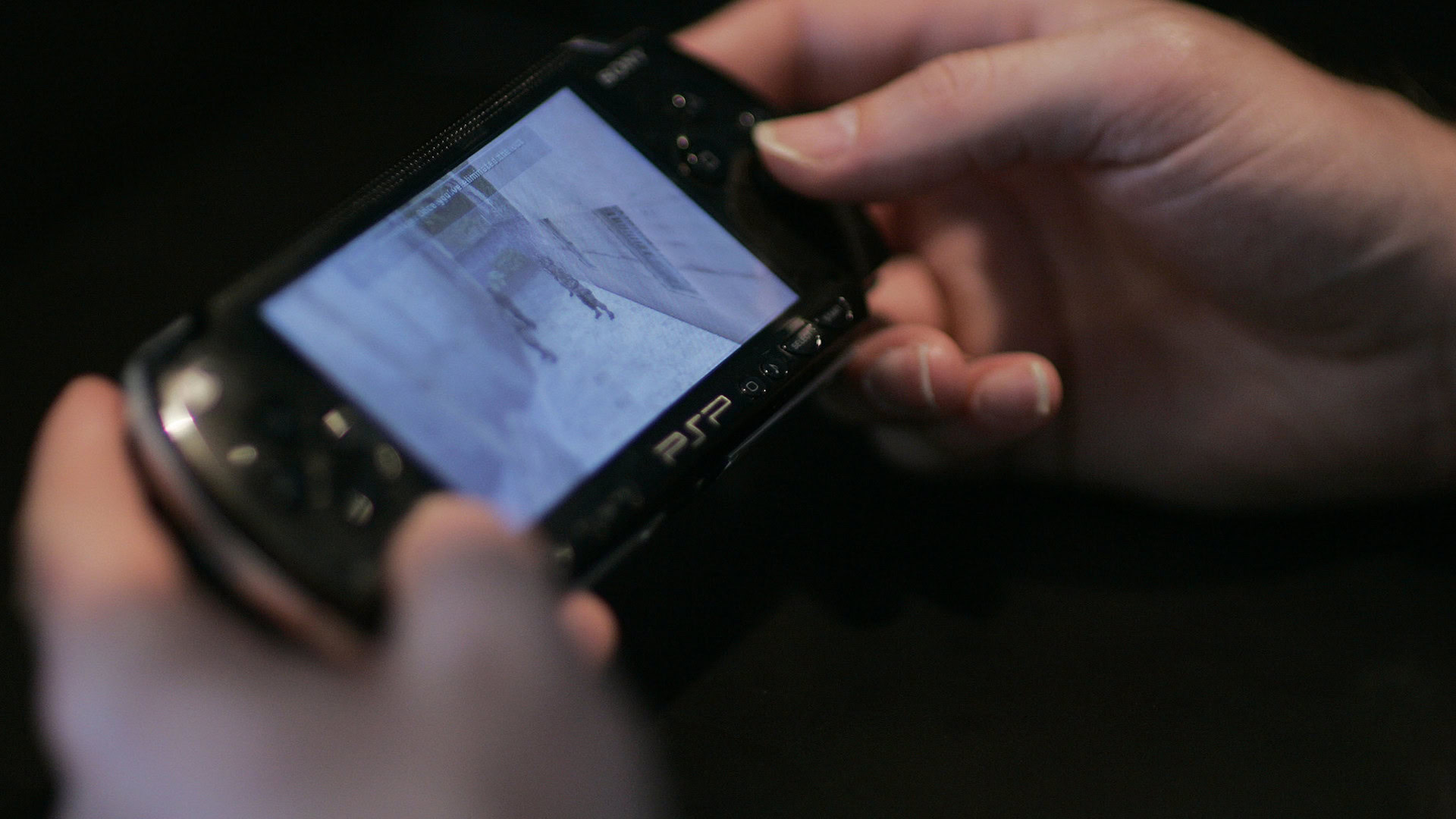Affiliate links on Android Authority may earn us a commission. Learn more.
PlayStation history: From console neophyte to all-conquering veteran
Published onApril 12, 2023

Sony PlayStation consoles have generally been the go-to platform for many gamers since the mid-1990s, with the exception of one or two generations. In fact, it’s not uncommon to hear PlayStation being used as a generic term for consoles in general.
Sony obviously wasn’t the first company to launch a console, with the likes of Atari, Nintendo, and Sega coming before it. But it certainly made gaming cool again, bringing the medium to new audiences.
The PlayStation 5 is the company’s latest console, but what about prior releases? We’re taking a look at PlayStation history, from the very first console all the way through to the latest bleeding-edge machine.
PlayStation: Tekken it to Nintendo
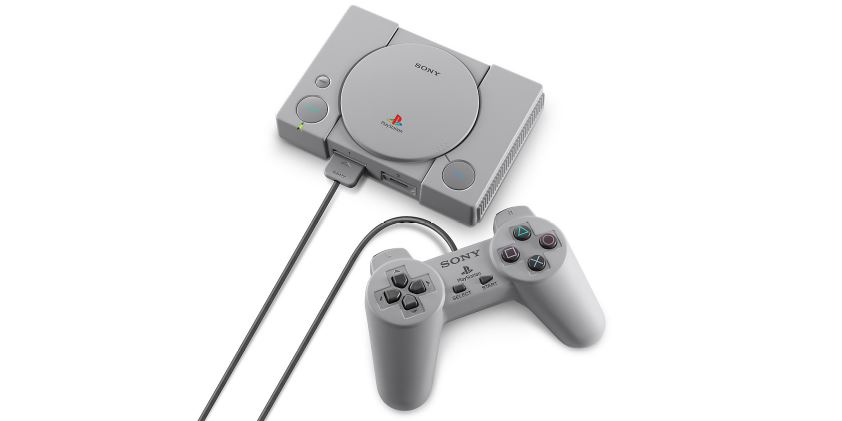
The first PlayStation was originally conceived as a result of a 1991 partnership between it and industry bigwig Nintendo. The house of Mario wanted to release a CD-based add-on console for the Super Nintendo Entertainment System (SNES) at the time, and enlisted Sony to develop the machine.
Nintendo took Sony by surprise when it announced a partnership with Philips for an add-on instead at the 1991 CES expo. Sony wasn’t keen to ditch all its work that went into the machine and therefore chose to launch a standalone PlayStation in 1994. The $299 price tag in the US also undercut Sega’s Saturn by a considerable $100, with Sony infamously announcing this price at E3 1995.
The PS1 was among the first wave of consoles capable of delivering 3D visuals, while also being arguably the first CD-based console to really gain widespread, global popularity. This differed from its arch rival’s offering, the Nintendo 64, which still used cartridges. CDs had much slower loading times than cartridges but offered 700MB of data compared to the maximum of 64MB of storage seen on later N64 games. This allowed PS1 developers to cram tons of in-game content, plenty of hours of audio tracks/voice acting, and loads of video content into their games. In fact, it wasn’t uncommon to see N64 ports of PS1 games — like Tony Hawk’s Pro Skater — lacking music tracks, more voice acting, and/or videos.
More reading: The best PlayStation emulators for Android
Powering the console was a 33Mhz RISC-based processor and a Toshiba-designed GPU, along with other bits of silicon for high-quality audio and video. Oddly enough, the console didn’t include dedicated 2D silicon, resulting in some 2D games looking better on rival platforms of the time (e.g. Sega Saturn).
Sony later released the PlayStation One in 2000, featuring a much smaller design. And in 2019, the company released the throwback PlayStation Classic mini-console (seen above), albeit to mixed reviews.
Some of the more prominent games released for the PlayStation include the Wipeout series, Final Fantasy 7, Tekken franchise, Gran Turismo 1 and 2, Metal Gear Solid, Ape Escape, Spyro the Dragon series, and the Crash Bandicoot franchise.
Sony PlayStation fast facts
- The console originally launched with a controller that featured no analog sticks or vibration, but Sony launched a Dual Analog and then “DualShock” controller in 1997. This wouldn’t be the last time a PlayStation console underwent a controller change during its time on the market.
- Sony also released a special developer-focused console dubbed the Net Yaroze PlayStation, allowing users to develop their own games. These are among the most sought-after PlayStation consoles these days for collectors.
- Some PlayStation models suffered from a defect that would eventually affect the laser, leading to games failing to load and other technical issues. The solution? Turn your PlayStation console upside down.
- It was possible to remove some games (like Ridge Racer) from the disc drive and keep playing them, as the whole game was loaded into the console’s 2MB of RAM.
- Sony later launched a Pocket Station accessory, similar to Sega’s VMUs for the Dreamcast. This was essentially a memory card with a screen, allowing you to play simple games on it.
PlayStation 2: Sony’s greatest console?

How do you follow up on the wildly successful PlayStation? Well, you release the $299 PlayStation 2, which managed to eclipse the original console in nearly every way. Released in 2000, Sony embraced the multimedia experience by offering support for DVDs. This was a big deal because the PS2 actually became one of the cheaper DVD players on the market at the time.
There was more to the PS2 than DVDs though, as the console also played host to some impressive internals. The so-called Emotion Engine CPU and Graphics Synthesizer GPU required plenty of finesse on the parts of developers as they were powerful but tricky to program.
It wasn’t the most powerful console of the era though, as the Microsoft Xbox and Nintendo GameCube often enjoyed better-looking graphics. But studios that put in the time and effort were able to deliver gorgeous games like Gran Turismo 4, Metal Gear Solid 2, Shadow of the Colossus, and the God of War titles. In fact, we got our first taste of HD games during this era, albeit at 1080i like Gran Turismo 4 and Tourist Trophy.
The PS2 dominated its generation by a huge margin, while also offering a ton of games.
Another major feather in the PS2’s cap was backward compatibility with PS1 games, which meant you didn’t have to abandon your entire collection of older PlayStation games.
As for the controller, Sony opted to essentially keep the PS1’s DualShock design. However, the company also made the face buttons pressure-sensitive, so pressing “X” harder would result in faster acceleration in racing games, for example.
Aside from the original PS2, the Japanese colossus also launched a slimline PS2 (seen above). This differed from the original model by being much smaller and thinner, having a top-loading disc drive (as opposed to a disc tray), and also incorporating a modem.
The early launch relative to rivals, combined with massive third-party support, DVD playback, and backward compatibility all contributed to it being the most popular console ever made. In fact, the machine is believed to have sold nearly 160 million units to date.
PlayStation 2 fast facts
- Sony reportedly had to apply for special export permits from the Japanese government over fears that the PS2 could be used for military applications. One oft-cited but erroneous report claimed that former Iraqi dictator Saddam Hussein bought thousands of consoles for use in weapons development.
- Some of the first few waves of PlayStation 2 consoles suffered from a so-called DRE (disc read error) hardware flaw, which saw some games and DVDs failing to read at all. This resulted in a lawsuit that was settled out of court.
- The company also launched a Broadband Adapter for online play as well as a hard drive too. Both accessories plugged into the back of the original PS2s, but this expansion bay was removed when the slimline PS2 launched.
- One particularly interesting PS2 variant was the Japan-only PSX, which combined a PS2 with DVR functionality (featuring a 160GB or 250GB hard drive) and DVD burning. This was also the first PlayStation device to use the Xross Media Bar UI, later seen on the PSP and PS3.
- The PS2 also offered two popular accessories at the time in the form of the EyeToy camera and microphones for the Singstar karaoke series.
PlayStation Portable: Taking on the king
Between the PS2 and PS3 launches, Sony decided to launch the first handheld in PlayStation history with the PlayStation Portable (PSP) back in 2004. Unlike Nintendo and its conservative approach to handheld power, Sony took the brute-force approach with the PSP by offering a processor that was closer to the Dreamcast and PS2. This resulted in many ports of contemporary home console titles.
The PSP also delivered features like Sony’s Memory Card Pro Duo format for storage, a built-in web browser, and a large LCD screen. Toss in multimedia playback functionality and Wi-Fi, and you had a feature-packed handheld for the time.
Sony used the so-called UMD format for games, which was essentially a mini-disc. The upside was this offered almost 2GB of storage space, but the downside was that loading times were absolutely horrible.
Related: The best PSP emulators for Android
Sony would go on to launch several PSP revisions during its lifetime. The first was the PSP Slim (or PSP-2000), featuring a sleeker design, USB charging, and double the RAM and storage. We also saw the PSP-3000 (featuring a better screen and integrated mic), the PSP Go (with a slideout gamepad, no UMD drive, and 16GB of internal storage), and the PSP Street (ditching Wi-Fi).
Some of the more prominent titles released on the PSP include Lumines, Metal Gear Solid: Peace Walker, Persona 3 Portable, Syphon Filter: Dark Mirror, and God of War: Chains of Olympus.
PlayStation Portable fast facts
- The console initially launched with a clock speed of 222Mhz, but Sony later released an update that enabled a 333Mhz clock speed.
- Sony originally demonstrated the ability to use a PSP as a rearview mirror in an F1 racing game for the PS3, but this feature never made it into a commercial game.
- Popular online import website Lik-Sang was forced to shut down in 2006 after getting embroiled in a legal battle with Sony. The website came under fire from Sony for selling PSPs to customers in the UK ahead of the official UK launch. Lik-Sang alleged that even Sony executives were importing PSPs from the company.
- Movies and other video content were also released on UMD, making for a rather interesting use of the format.
- The PSP was also Sony’s first region-free console, which means games bought anywhere in the world would work on your handheld. This was a welcome departure from the norm, when consoles usually restricted you to games from your region (i.e. PAL or NTSC).
PlayStation 3: A rare misstep (at first)
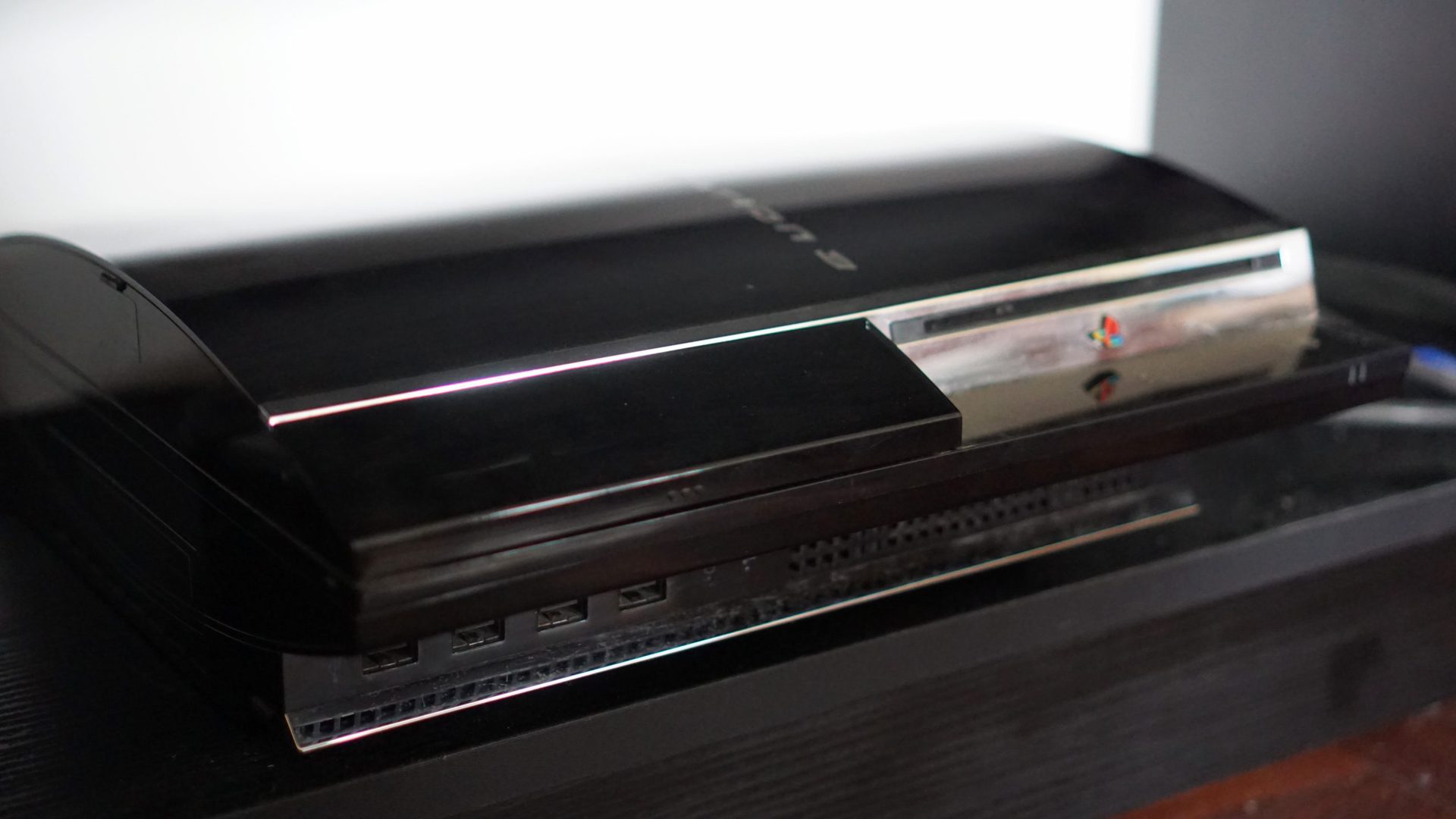
Flush with success after the PS1 and PS2, Sony had all the confidence in the world when it revealed the PS3. Or was it arrogance? Judging by its infamous E3 2006 press conference, we’d go with the latter.
The PS3 was filled to the brim with exotic and/or cutting-edge tech at launch, such as a purpose-built Cell processor, NVIDIA RSX GPU, and a Blu-Ray drive. And this was Sony’s first console designed with HD from the get-go, supporting an HDMI output and 1080p resolution. The company even offered support for PS2 games by including the PS2’s hardware in the new console.
All of this tech came at a price though, and the announcement of a $499 price tag for the base 20GB variant (or $599 for the 60GB model) at E3 2006 drew gasps from the crowd in attendance. PlayStation godfather Ken Kutaragi would double down on the decision by insisting that people would want to work more hours in order to be able to buy the new console. Sheesh.
Unfortunately for Sony, the first year and a bit of release was a disappointment due to both the price and the somewhat barren game library. This period even saw the spawning of the “PS3 has no games” meme, owing to the drought of titles in the early going.
The PS3 got off to an awful start due to a high price and complex architecture. It didn't help that executives like Ken Kutaragi seemed incredibly arrogant at the time.
Another issue for the PS3 at this time was that the system was even harder to develop for than the PS2, owing to the Cell processor and the seven specialized Synergistic Processing Units (SPUs). The latter processors were essentially used akin to today’s multi-threaded or multi-core CPUs, and it took a long time for developers to get to grips with this. This tricky architecture meant that many multi-platform titles looked better on Xbox 360 in those early years.
Once developers finally figured out the PS3’s quirky, complex architecture, we saw a ton of gorgeous exclusives hitting the console. These titles include the Uncharted series, Metal Gear Solid 4: Guns of the Patriots, the Little Big Planet franchise, Killzone 2 and 3, and The Last of Us.
The PS3 underwent several cost-cutting revisions in its lifecycle, with Sony killing PS2 support a couple of years in by removing the relevant silicon, introducing a slim model, and then later offering a super-slim option. These measures all meant that the PS3 eventually became a more affordable proposition. Combine the price tag with the excellent games library, and it’s no wonder the PS3 eventually outsold the Xbox 360 globally.
PlayStation 3 fast facts
- The PS3 initially supported Linux distributions as an alternative operating system, but Sony later killed this feature due to security concerns (i.e. hacking). Sony was taken to court for this move, with the company eventually settling out of court.
- Clusters of PS3s were also used for supercomputing purposes, while the Folding @ Home project even allowed regular consumers to donate their PS3’s power to scientific research.
- PS3 controllers shipped with gyroscope-style functionality dubbed SixAxis. Unfortunately, the first generation of controllers lacked vibration owing to a lawsuit by Immersion. Sony would explain this omission by claiming that vibration interfered with the SixAxis sensors. The company would later implement both vibration and SixAxis functionality after settling with Immersion.
- Sony first showed off the PS3 with a so-called “boomerang” controller in 2005, before reverting to the traditional DualShock form factor prior to launch.
- Some early consoles suffered from a “Yellow Light of Death,” which signified the machine was dead. This was a similarly serious failure as the Xbox 360’s Red Ring of Death, but on a much smaller scale.
- Sony’s Cell processor was designed in partnership with IBM and Toshiba in a deal worth $400 million. IBM then offered a modified version of this processor to Microsoft for the Xbox 360, according to one of the lead engineers in charge of the Cell project. Yep, Sony essentially funded its competition’s processor.
PlayStation Vita: Power > games
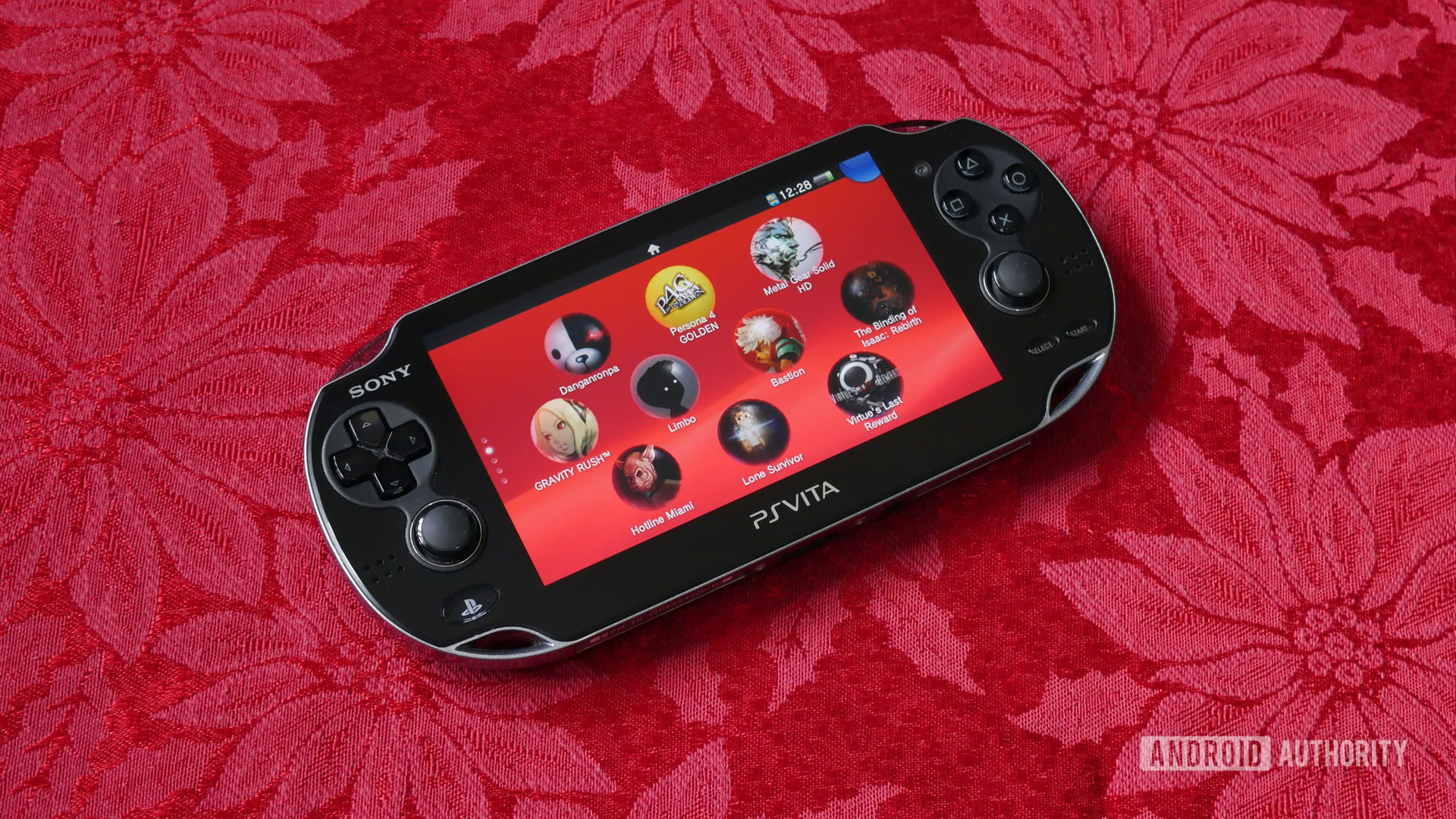
Sony followed up on the PSP with the PlayStation Vita in 2012, and it makes a strong argument for being one of the most technologically impressive handheld consoles of all time. Featuring a gorgeous OLED screen, dual analog sticks, and a slick design, the Vita definitely made a favorable first impression.
The big selling point with the new handheld was a rear trackpad, allowing you to control various elements of a game by touching the back of your machine. For example, the platformer Tearaway allowed you to manipulate the environment, while Borderlands 2 mapped the melee attack to this touchpad.
Sony also implemented some beastly internals derived from smartphones and tablets, featuring a quad-core Cortex-A9 CPU and a PowerVR SGX543MP4+ GPU. In fact, this is essentially the same GPU as the iPad 3, albeit with a couple of tweaks. Other notable features included a gyroscope, front and rear cameras, and optional 3G connectivity.
More gaming coverage: Emulators for Android — Can your phone handle these consoles?
The PlayStation Vita originally shipped with no meaningful internal storage, forcing users to buy memory cards to store digital downloads and saves. Unfortunately, Sony opted for expensive proprietary storage media, starting at $20 for a 4GB memory card all the way to $100 for a 32GB card. Even a measly 16GB card retailed for $60 at launch. No wonder third-party adapters surfaced which allowed you to use SD cards.
Sadly, the PS Vita was a notable flop. It sold just over 16 million units to date, according to VGChartz. Meanwhile, the Nintendo 3DS has sold over 75 million units according to the Japanese company’s website. In other words, even the Nintendo GameCube, which lagged behind the PS2 and Xbox in terms of sales, outsold the Vita. This makes it the least successful console in PlayStation history.
Some of the more prominent games released on the Vita include Tearaway, Gravity Rush, Killzone Mercenary, Persona 4 Golden, Uncharted: Golden Abyss, and Dragon’s Crown. Fortunately, the console was also compatible with PSP and PS1 titles.
PlayStation Vita fast facts
- Sony released the PlayStation TV in 2013, which was a mini-console designed to be hooked up to a TV. Users could connect their PS3 or PS4 controller to the machine, playing some Vita and PSP titles as well as using it for streaming video.
- The Vita gained a reputation as a haven for indie games, with numerous titles like Luftrausers, Spelunky, Fez, Guacamelee, and Bastion appearing on the handheld. In fact, indie titles were still being developed for the platform as late as 2021.
- Sony released the Vita Slim a few years after the original model. The new device was thinner as the name implies, but it also brought an LCD screen, 1GB of internal storage, standard micro-USB charging, and longer battery life.
- The Japanese giant announced plans to shutter the PS Vita (and PS3) online storefront in Summer 2021. It then halted the plans following an outcry from consumers.
PlayStation 4: Back on top of things
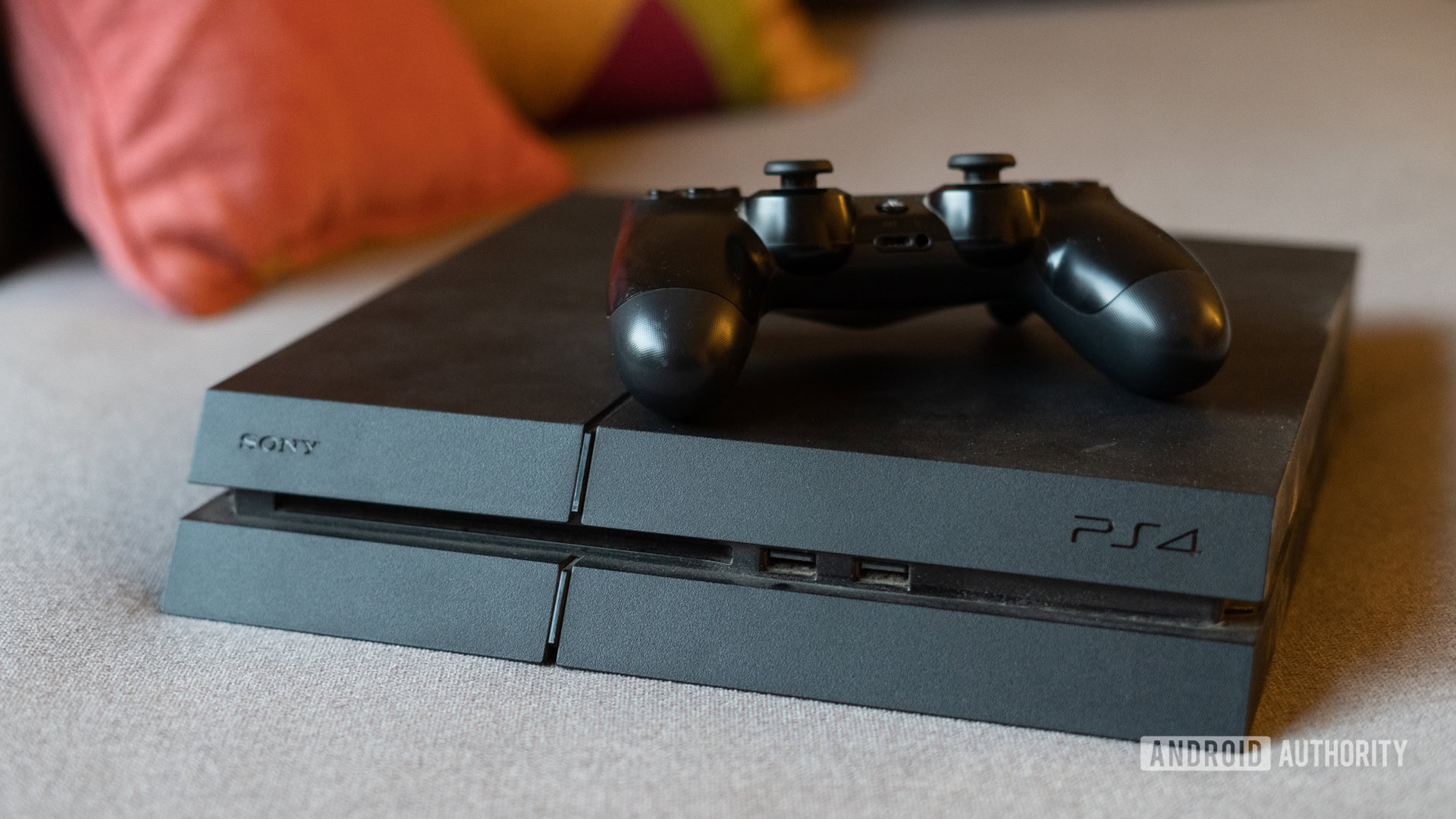
It seemed like Sony learned its lesson with the PS3, as 2013’s PS4 launched at a solid $399 price tag and opted for largely conventional hardware. The PS4 offered an AMD APU, featuring an octa-core Jaguar-based CPU, custom AMD graphics, and 8GB of GDDR5 RAM. This was largely similar to the Xbox One, but with Sony’s console offering more impressive AMD graphics and faster RAM.
This architecture made the PS4 a very developer-friendly console, allowing studios to hit the ground running and deliver some great titles from the get-go. These games included exclusives like Uncharted 4: A Thief’s End, Horizon Zero Dawn, God of War, Marvel’s Spider-Man, Gran Turismo Sport, and Ghost of Tsushima. The vast majority of multi-platform games also ran better on the PS4 compared to the Xbox One.
Great exclusives and reasonable pricing meant the PS4 trounced the Xbox One at the sales tills.
One big downer was that the PS4 doesn’t support older PlayStation titles such as the PS3 and PS2 libraries. Instead, some PS2 games were re-released as “Classics” titles for digital download. This was in sharp contrast to the Xbox One, which offered backward compatibility with loads of Xbox 360 and original Xbox titles.
Sony also introduced a revised DualShock 4 controller with the new console, featuring a trackpad, a light strip on the back of the gamepad, and a “Share” button so users can quickly share screenshots and videos.
The Japanese company later launched the PS4 Slim and PS4 Pro in 2016, with the former offering a thinner, more compact design. The latter upped the ante with much faster CPU clock speeds, beefed-up graphics, and 4K gaming support (via so-called checkerboard rendering).
PlayStation 4 fast facts
- Unlike the PS3, which offered free online multiplayer access, PS4 owners need to buy a PlayStation Plus subscription to play most paid games online. This was in line with arch-rival Microsoft’s long-standing policy.
- Sony launched a Playroom live-streaming app alongside the PS4, allowing users to stream video with the included PlayStation Camera to the likes of Twitch. Twitch would crack down on Playroom streams shortly after launch due to people streaming all manner of unsavory/illegal content.
- VR gameplay came to the PS4 thanks to the PlayStation VR headset, with support for a variety of games. Notable titles include ASTRO Bot Rescue Mission, Resident Evil 7, Ace Combat 7, Beat Saber, Gran Turismo Sport, and Tetris Effect.
- Sony also released a limited 20th-anniversary edition PS4, featuring the same gray color scheme as the original PlayStation.
PlayStation 5: Sony takes stock
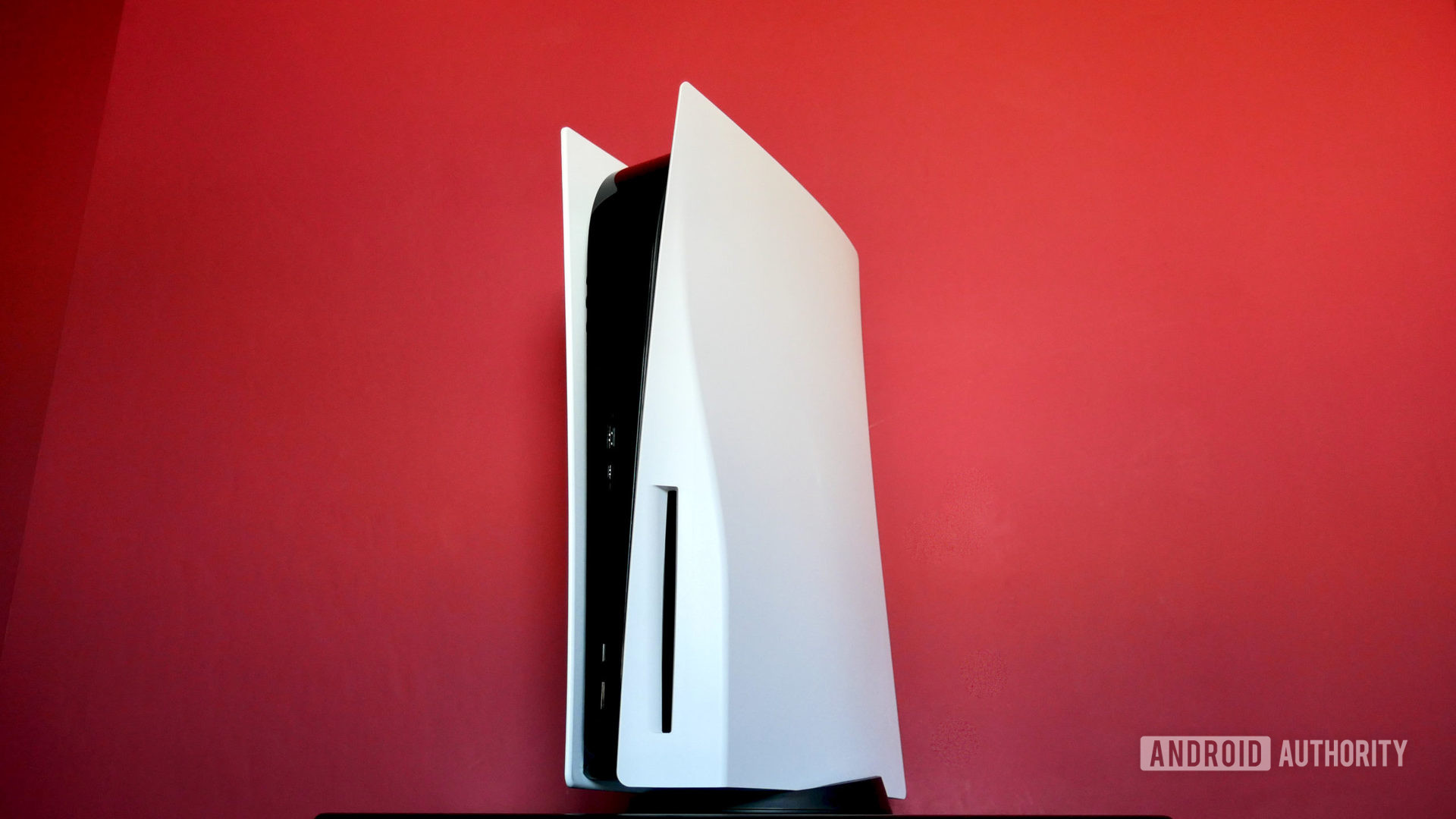
Sony’s latest console is 2020’s PlayStation 5, and it represented another major step forward in terms of technology. The Achilles heel of the PS4 was the CPU, which was actually built with low-end tablets and netbooks in mind. But Sony upgraded things in a big way with the PS5, using an octa-core AMD Zen 2 CPU paired with RDNA2 graphics and 16GB of GDDR6 RAM.
Perhaps the biggest upgrade comes in the storage arena, as the PS5 adopts a super-fast custom NVMe M.2 SSD (825GB). This enables lightning-fast loading times in games, even in open-world titles. Sony has also focused on audio with the new console, with its so-called Tempest Engine tech enabling more immersive audio effects when used with headphones.
PS5 vs Xbox Series X: Which current-gen games console should you buy?
Another noteworthy feature in this generation is hardware-based ray tracing, which allows for more realistic lighting and reflection effects. This graphical technique wasn’t quite possible on earlier consoles and was limited to high-end gaming PCs at first.
The PS5’s horsepower means it delivers native 4K gameplay for many games compared to the PS4 Pro’s checkerboarded/upscaled 4K for most titles (and the PS4’s 1080p support). Sony’s newest machine also brings 60fps and even 120fps gameplay to the table for smoother performance, as well as 40fps gaming for some titles.
The gamepad got a major overhaul in this generation, now called the DualSense controller. The biggest change here is the addition of shoulder triggers that can simulate resistance. Sony cited the example of drawing an arrow with a bow, while stealth/action game Deathloop physically lock the gamepad’s trigger if your gun jams in-game. Another neat controller addition is improved haptic feedback, allowing you to feel more subtle effects (e.g. the pitter-patter of rain) than simple vibration.
The PS5 is available in two variants, with both featuring the same horsepower and 825GB SSD. But the standard model comes with a 4K Blu-Ray disc drive for $499, while the $399 variant lacks a physical disc drive and relies on digital downloads only.
Sony quietly released a new PS5 variant in 2022, being equipped with a 6nm processor rather than the original’s 7nm design. This makes for a cooler, more quiet console.
Prominent PS5 games include Gran Turismo 7, Returnal, Ratchet and Clank: Rift Apart, Spider-Man: Miles Morales, Horizon Forbidden West, and the Demon’s Souls remake.
PlayStation 5 fast facts
- Look closely at the PS5’s gamepad rear grips and you’ll see that it’s covered in a textured pattern of triangles, squares, Xs, and circles. This is obviously a nod to the iconic PlayStation face button symbols.
- Thankfully, the PS5 is backwards compatible with the vast majority of PS4 games. But there’s no PS3 support here.
- Despite limited supplies due to the ongoing industry-wide chip shortage, the PS5 shipped more consoles during its first two quarters on the market than the PS4 did during its first two quarters.
- Sony announced an all-you-can-eat subscription gaming service for the platform in March 2022. The service is divided into three tiers, with the first being the existing PlayStation Plus service and the other two dubbed PlayStation Plus Extra and PlayStation Plus Premium. The latter option also gives you access to PS2 classics and titles ported from other PlayStation consoles.
- The company launched the PSVR 2 virtual reality headset for the console in February 2023. Unfortunately, it’s not backwards compatible with original PSVR titles.
- Sony also launched a so-called DualSense Edge gamepad in 2023, seemingly inspired by the Xbox Elite controller. The Edge gamepad comes with features like custom button profiles, extra shoulder buttons, and user-replaceable analog sticks.
That’s it for our look at the history of PlayStation consoles! How many PlayStation machines do you own? Let us know in the comments below. And give us your pick for your favorite PlayStation console via the poll.
